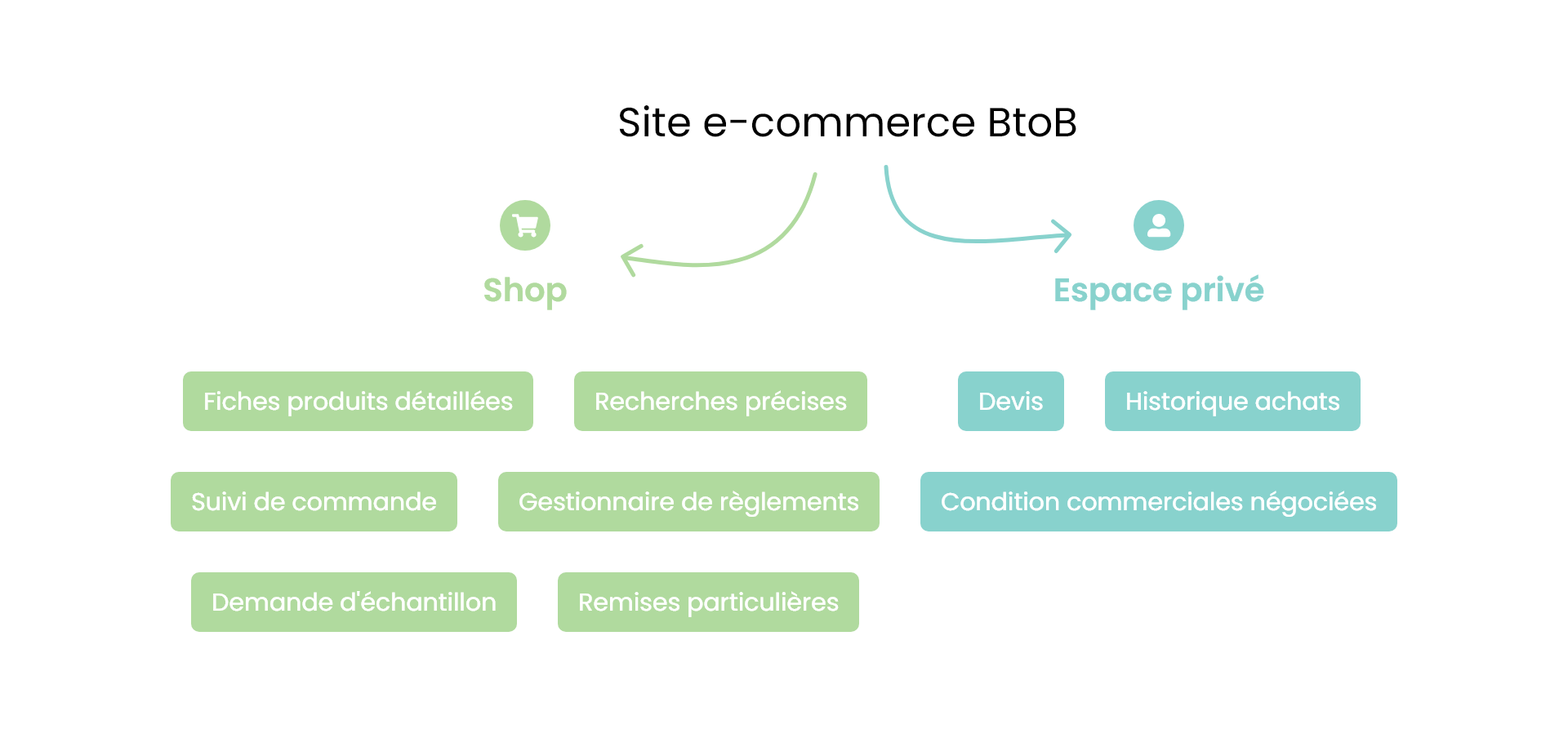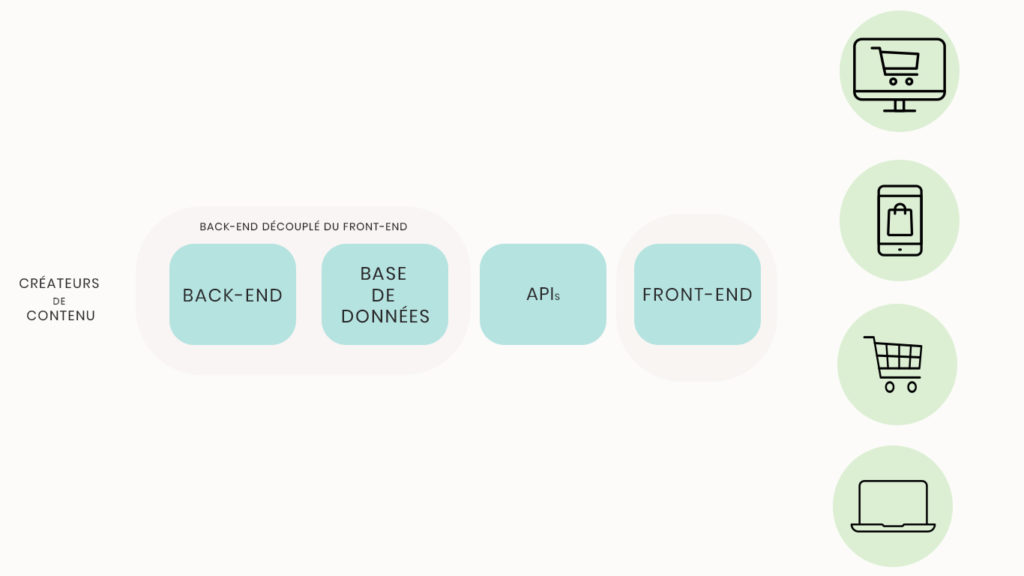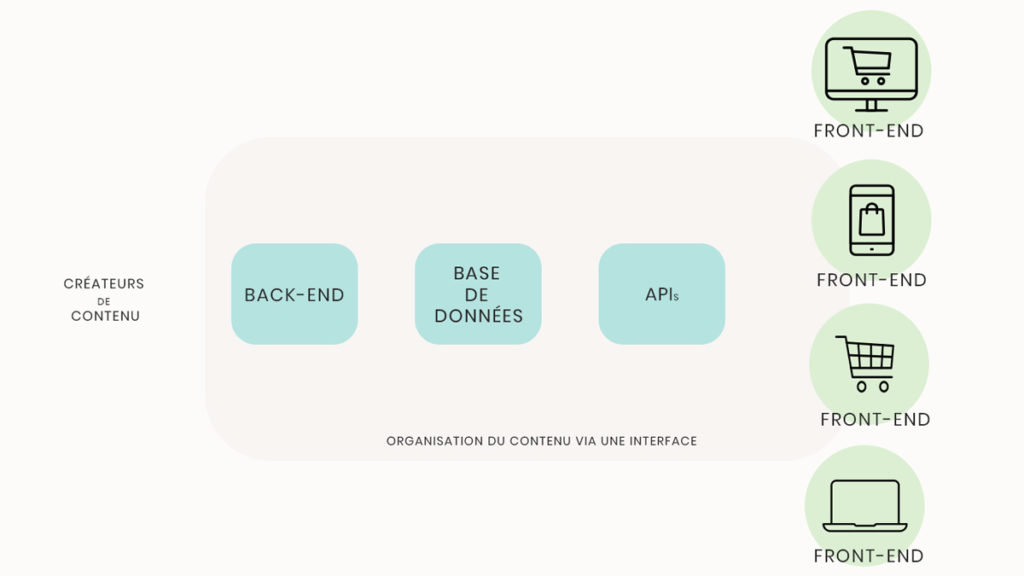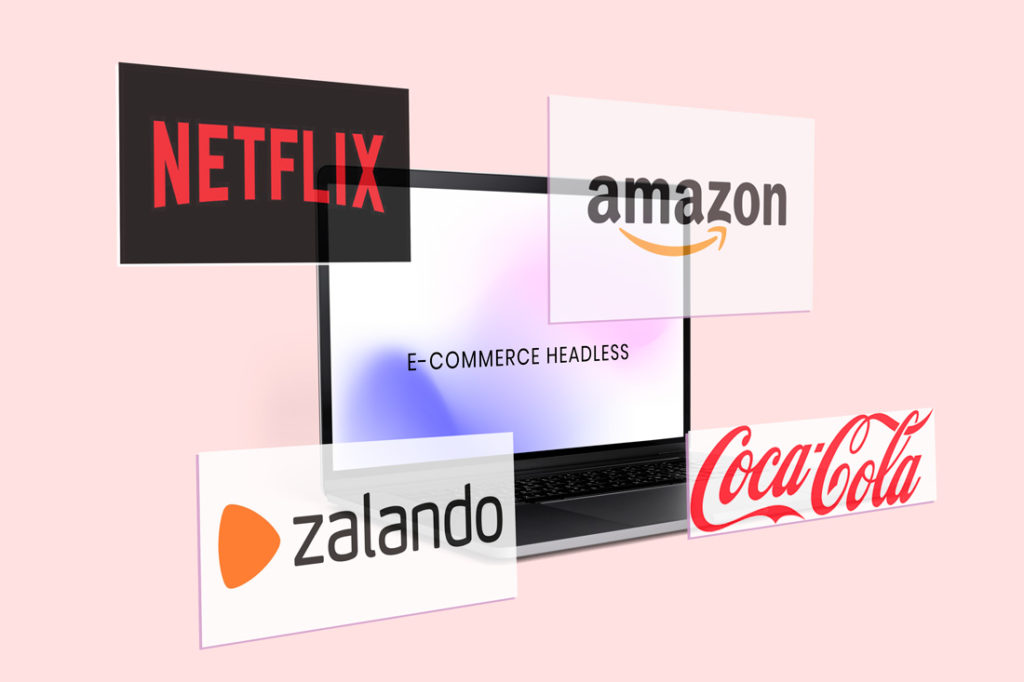On vous parle du e-commerce BtoB, mais vous n’avez pas encore franchi le pas ? Vous hésitez encore, car vous n’êtes pas tout à fait convaincu ou vous ne savez pas par quel bout commencer ? Cet article va vous aider à y voir plus clair et va vous permettre de comprendre les avantages de l’utilisation du commerce en ligne pour votre entreprise. Car oui, le e-commerce peut vous aider à atteindre un nouveau palier dans la commercialisation de votre offre et cela peut également vous aider à faire des économies substantielles.
Le saviez-vous ?
La Fédération du e-commerce et de la vente à distance (FEVAD) a dévoilé dans son étude 2022 les chiffres clés du e-commerce et on note une augmentation des ventes BtoB de 16% en 2021 et de 19,6 % rien qu’au 1er trimestre 2022 ! La raison de cet engouement ? La crise Covid qui a fortement accéléré la digitalisation du commerce auprès des professionnels et a changé leur regard sur le e-commerce. Les relations clients fournisseurs ont certes repris en physique, mais se poursuivent maintenant en ligne. Aujourd’hui, le choix d’un fournisseur est de plus en plus corrélé à l’accessibilité de son offre en ligne (consultation du catalogue, disponibilité des stocks, possibilité de passer commande en ligne facilement, tracking des commandes, prix personnalisés, etc..).
Le e-commerce BtoB est donc crucial pour votre entreprise et on vous explique pourquoi.
E-commerce BtoB vs BtoC existe-t-il vraiment des différences ?
La question est légitime surtout quand on considère que les acheteurs dans le BtoC sont des vendeurs dans le BtoB. Si la création d’un site e-commerce doit être abordée de la même façon car l’approche de fond est la même : sélectionner des produits parmi un catalogue tout en bénéficiant des meilleurs prix possibles avec une livraison rapide et sécurisée, les différences sont bien là. Des spécificités propres au e-commerce BtoB sont à prendre en compte dans le commerce en ligne inter-entreprises, ce qui le distingue radicalement de l’approche BtoC.
Voyons ensemble comment le e-commerce BtoB peut vous aider à atteindre un nouveau palier dans la commercialisation de votre offre et comment il s’impose aujourd’hui comme un élément incontournable de votre approche omnicanal.
Un site attractif mais pas que…
Si les sites e-commerce BtoC jouent sur la séduction et la simplicité, les sites e-commerce BtoB doivent appliquer la carte de l’organisation d’un contenu détaillé, technique et personnalisé sans évidemment oublier la petite touche esthétique qui le rend attractif et le différencie. En se connectant à son espace personnalisé de votre site e-commerce BtoB, l’acheteur doit entrer dans son propre magasin virtuel et retrouver tous les produits qu’il a l’habitude de commander aux conditions commerciales qui ont été fixées en amont. L’exigence des acheteurs en BtoB va porter sur la personnalisation de son espace, de ses conditions commerciales et la possibilité – à tout moment – d’avoir un contact physique s’ils en éprouvent le besoin. L’interface avec l’ERP de l’entreprise est également clé ! Plus précis, un site e-commerce BtoB doit apporter un degré de détails plus important que sur un site BtoC.
Une stratégie sur-mesure.
Une stratégie E-commerce BtoB performante repose sur la personnalisation de l’approche client. En effet, l’acheteur doit retrouver dans son espace privé, ses devis, ses produits commandés, ses conditions commerciales négociées, etc.
Un site BtoB efficace doit permettre à l’acheteur
- de consulter des fiches-produits informatives détaillées et précise : Caractéristiques, variantes, référence fournisseur, informations douanières, code EAN13…
- de faire des recherches produits précises en utilisant des filtres (par marques, catégories et sous-catégories produits, prix, couleurs…)
- de demander un échantillon afin de tester le produit avant de le commander en gros.
- de gérer de manière sécurisée ses règlements en ligne et aussi hors ligne
- de suivre sa commande en temps réel
- d’avoir les prix de vente, des remises sur quantité et des conditions de règlement qui s’adaptent à son profil et confidentiels
- …
L’approche personnalisée est une des clés de la réussite et elle est également garante d’une relation privilégiée et pérenne.
Difficile de mettre en place un site e-commerce BtoB performant sans l’avoir anticipé avec une agence web spécialisée.
Une expérience client fluide
Pour être efficace, le e-commerce BtoB doit évidemment offrir tous les atouts que permettent les outils digitaux inclus dans les plateformes dédiées, telle que la plateforme BigCommerce . Pour aller encore plus loin vous devez travailler l’interface utilisateur (UI) qui est au cœur du e-commerce BtoB, sans négliger l’expérience client (UX) qui mérite une attention toute particulière. Ces deux composantes sont majeures dans les ventes en ligne BtoB. (lire aussi notre article spécial Ux/Ui)
Si ces conditions sont remplies, vous avez la garantie d’une expérience client fluide et gagnante.

Le e-commerce BtoB, un atout commercial incontournable
Vous avez encore des doutes ? Voici quelques arguments qui devraient finir de vous convaincre.
Grâce au e-commerce BtoB :
Vous vous démarquez de la concurrence
Dans une étude « The B2B Millennial Buyer Survey Report » (Demand Gen Report / Mx Group). 55% des personnes interrogées déclarent qu’une expérience digitale réussie est un critère déterminant dans le choix d’un fournisseur on-line BtoB.
Vous élargissez votre cible
En utilisant le commerce électronique comme canal de vente complémentaire, vous touchez un public plus large. Les études le montrent, les acheteurs BtoB attendent des fournisseurs une présence en ligne et pas seulement via un site mais aussi via les réseaux sociaux. En effet, les acheteurs B2B ont adopté les codes des acheteurs BtoC. Il faut aujourd’hui que les vendeurs BtoB l’intègrent. Grâce à une stratégie e-commerce BtoB efficace et omnicanal, vous touchez plus large et plus juste !
Vous augmentez le panier de vos clients actuels
Le e-commerce BtoB vous permet non seulement de développer votre base prospects, mais vous permet aussi de mieux développer le potentiel d’achat de vos clients. Comment ? En mettant en œuvre facilement un programme de recommandations automatisé pour des ventes croisées et des ventes additionnelles. Sur la base de leurs commandes, vous pouvez également suggérer à vos clients différents produits auxquels ils n’avaient pas forcément pensé.
Vous augmentez la satisfaction de vos client
Vos clients peuvent passer commande de n’importe où, à n’importe quel moment pour répondre instantanément à leurs besoins de réapprovisionnement. En leur offrant cette autonomie, vous leur offrez une meilleure expérience et un meilleur service.
Vous motivez vos équipes internes
En diminuant le temps passé à de la saisie de commandes, vous offrez à vos équipes la possibilité de davantage se concentrer sur des tâches à forte valeur ajoutée : conseils clients, relations commerciales, montages d’opérations commerciales, visites sur le terrain. Ainsi vous pouvez diminuer vos coûts directement liés aux tâches administratives.
Vous analysez pour plus de performance et de résultat
Grâce aux tableaux de bord des plateformes e-commerce BtoB vous récoltez toutes les données essentielles à l’analyse de votre efficacité commerciale. Vous obtenez également des données de navigation sur votre site et vous pouvez ajuster le contenu de vos pages pour renforcer l’engagement client. Cette fonctionnalité jouera un rôle clé dans l’optimisation de votre site. Vous avez un suivi instantané de vos actions et de vos ventes. Les analyses vous aideront à identifier ce qui fonctionne et ce qui ne fonctionne pas pour votre entreprise. Vous vous adaptez, vous ajustez.
Pour conclure
Le e-commerce BtoB ne doit pas être aujourd’hui considéré comme un gadget mais comme une opportunité business incontournable. Pour réussir dans le e-commerce BtoB, vous devez avoir une stratégie solide, un bon partenaire digital et des outils adaptés. En procédant ainsi, votre entreprise peut atteindre un public plus large et stimuler les ventes. Il est important de garder à l’esprit que le commerce électronique BtoB est un secteur en pleine croissance. Ne laissez pas passer le train !



















